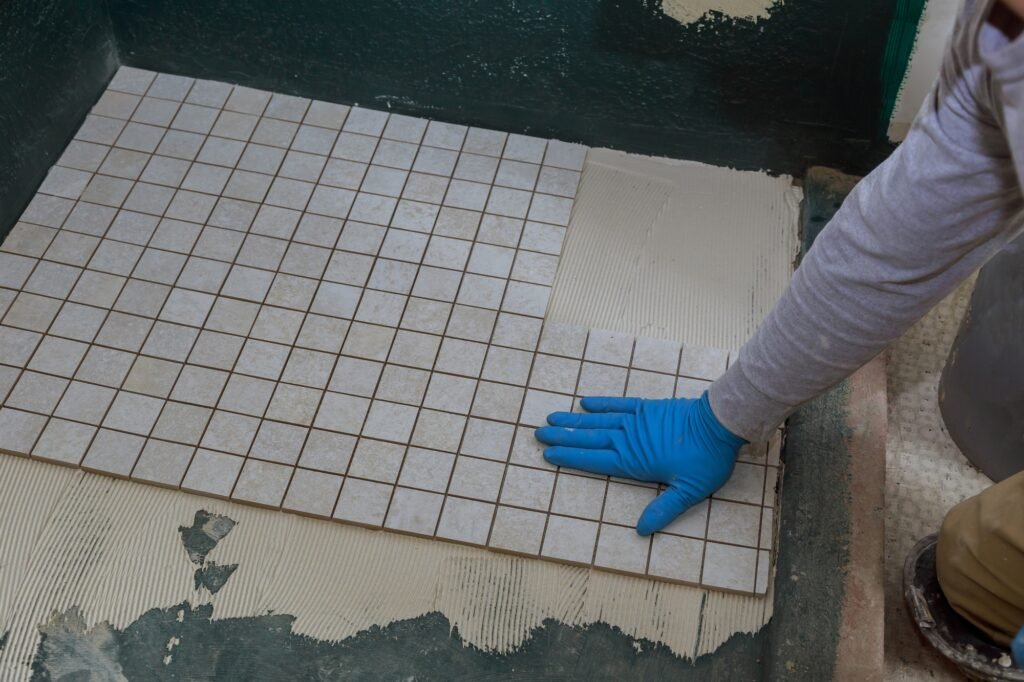Hydroxypropyl Methyl Cellulose (HPMC) plays a major role in the production of tile adhesives. HPMC enhances the performance and efficiency of these adhesives, making it a key ingredient for strong and durable tile installations. This article explains what HPMC is, its chemical makeup, and why selecting high-quality HPMC is crucial for tile adhesive factories. As demand for efficient and eco-friendly construction materials grows, HPMC becomes even more important. Its unique properties make it a preferred choice in the industry.
Composição química e propriedades do HPMC
HPMC is derived from cellulose and modified with hydroxyl, methyl, and propyl groups. This allows it to dissolve in water and form a gel, which is essential for tile adhesives. HPMC is thermally stable, meaning it performs well under different temperature conditions. It comes in various viscosities, affecting how easy it is to work with tile adhesives. This material controls the open time and slip resistance of adhesives, making installation easier and more precise. HPMC is also non-toxic and biodegradable, which aligns with environmental goals. Its thickening and binding properties enhance adhesion and strength.
Benefits of Using HPMC in Tile Adhesives
HPMC improves water retention, preventing adhesives from drying too quickly and ensuring strong adhesion. It makes adhesives easier to spread and apply. With HPMC, the “open time” of adhesives is longer, giving more flexibility when placing tiles. It also helps prevent tiles from sagging, keeping them aligned and reducing rework. HPMC improves freeze-thaw stability, crucial for performance in different climates. This material enhances the durability and lifespan of tile installations, reducing maintenance costs. Using HPMC is cost-effective because it reduces material waste and labor costs.
Challenges and Considerations in Using HPMC
Sourcing high-quality HPMC consistently can be challenging. It is important to choose the right grade and viscosity of HPMC for specific formulations. Impurities in HPMC can affect adhesive performance, so quality control is necessary. HPMC must be compatible with other additives in tile adhesives for optimal performance. Proper storage and handling of HPMC maintain its effectiveness. Regulatory considerations and compliance requirements are important when using HPMC in construction. Continuous research and innovation are needed to optimize HPMC formulations for industry needs.
Applications and Innovations in Tile Adhesives with HPMC
HPMC-enhanced tile adhesives are used in residential, commercial, and industrial projects. Recent innovations have improved bonding
HPMC para adesivo de azulejos
Introdução
Hydroxypropyl Methyl Cellulose (HPMC) is important in making tile adhesives. It helps make tile adhesives perform better and work more efficiently. HPMC is a chemical that comes from cellulose. It is useful in many construction jobs. Tile adhesive factories need high-quality HPMC for strong and lasting tile installation. More people want efficient and eco-friendly construction materials. HPMC meets this need. It also meets industry standards for tile adhesives. HPMC is a top choice for manufacturers because of its special properties.
Composição química e propriedades do HPMC
HPMC is made from cellulose. It has hydroxyl, methyl, and propyl groups. HPMC dissolves in water and can form a gel, which is important for tile adhesives. It is stable in heat, helping tile adhesives work well in different temperatures. HPMC has a wide range of viscosity, affecting how easy it is to use tile adhesives. HPMC helps control open time and slip resistance, making tile installation easier and more precise. It is non-toxic and biodegradable, meeting environmental rules. HPMC thickens and binds, making tile adhesives stick and hold better.
Benefits of Using HPMC in Tile Adhesives
HPMC helps tile adhesives retain water, preventing them from drying too quickly. This ensures strong bonding. It makes tile adhesives easier to spread and use. HPMC extends the open time, allowing more flexibility when placing tiles. It helps prevent tiles from sagging, keeping them properly aligned. HPMC improves freeze-thaw stability, important for varying climates. It increases the durability and lifespan of tile installations, lowering maintenance costs. Using HPMC is cost-effective because it reduces material waste and labor costs.
Challenges and Considerations in Using HPMC
Getting high-quality HPMC and a steady supply can be challenging. Choosing the right grade and viscosity of HPMC is crucial for specific tile adhesive needs. Impurities in HPMC can affect tile adhesive performance, so quality control is necessary. HPMC must work well with other additives in tile adhesive formulas. Proper storage and handling of HPMC maintain its properties. Regulatory considerations are important when using HPMC in construction. Continuous research is key to optimizing HPMC for changing industry needs.
Applications and Innovations in Tile Adhesives with HPMC
HPMC-enhanced tile adhesives are used in homes, businesses, and industrial projects. New HPMC formulas have improved bonding strength and curing times. Successful tile installations using HPMC-based adhesives show their effectiveness. HPMC plays a role in creating eco-friendly solutions, fitting with green building practices. Customizing HPMC formulas can address specific tile adhesive challenges. Manufacturers and researchers work together to develop HPMC-enhanced adhesives. Future trends include HPMC driving innovation and improving construction practices.

